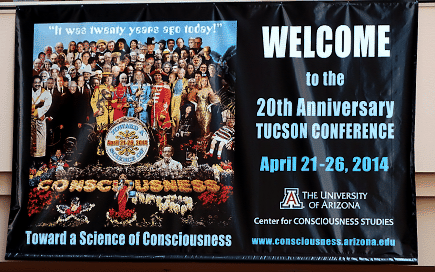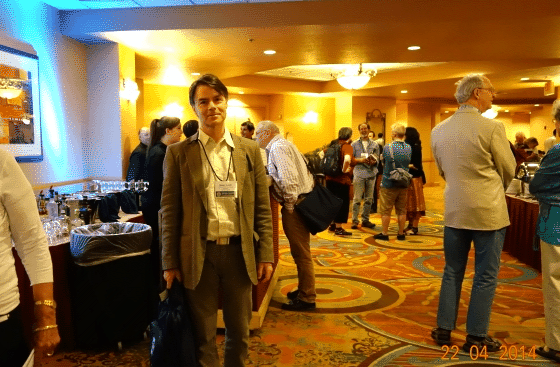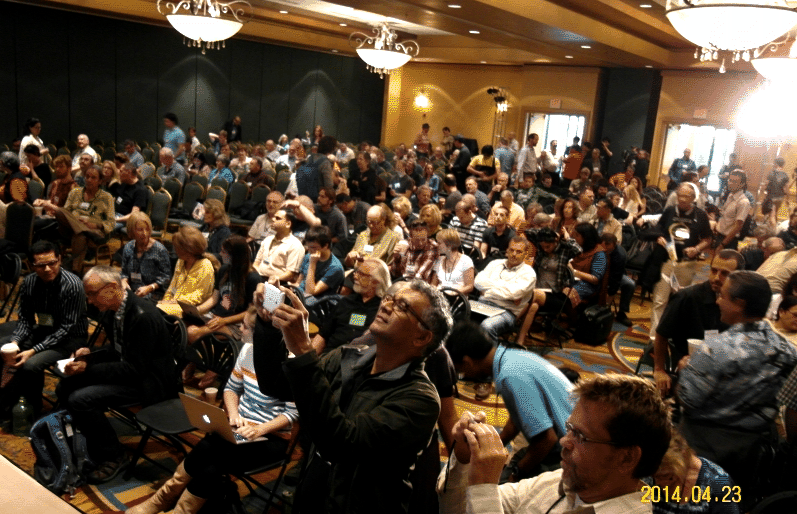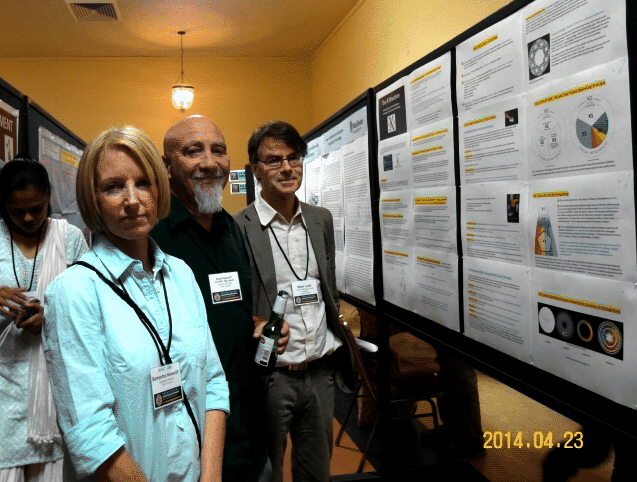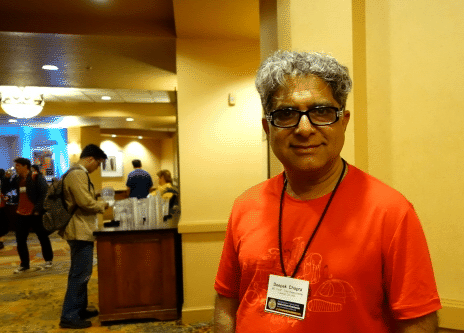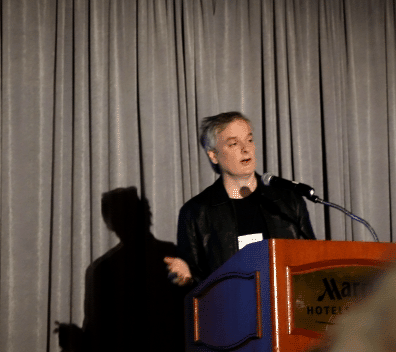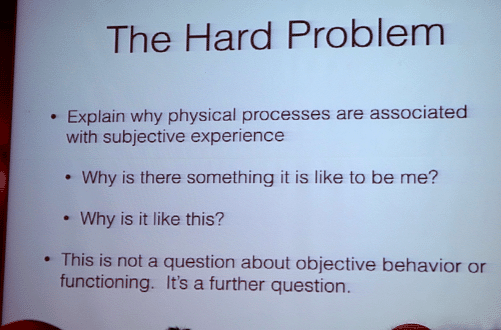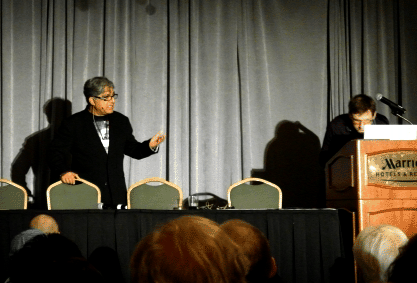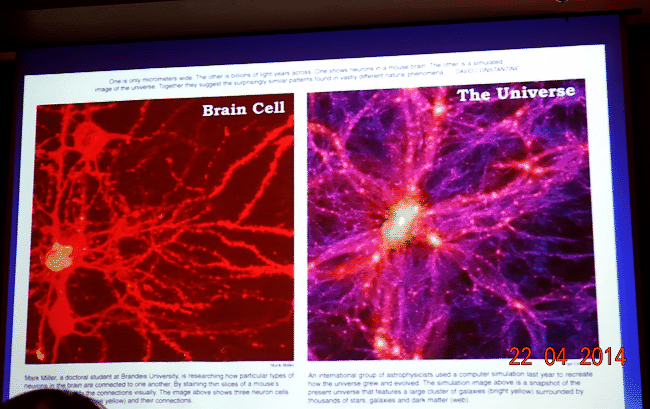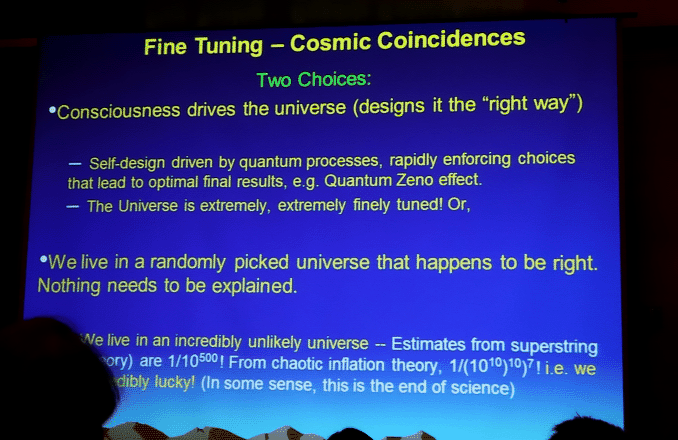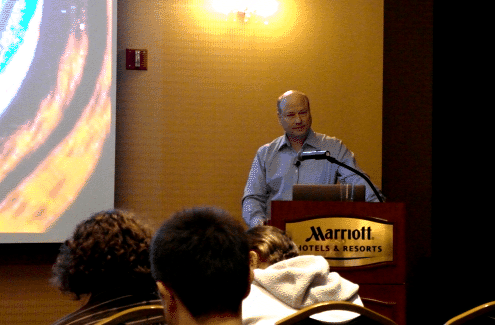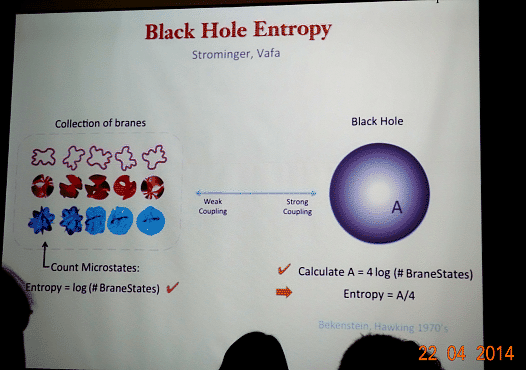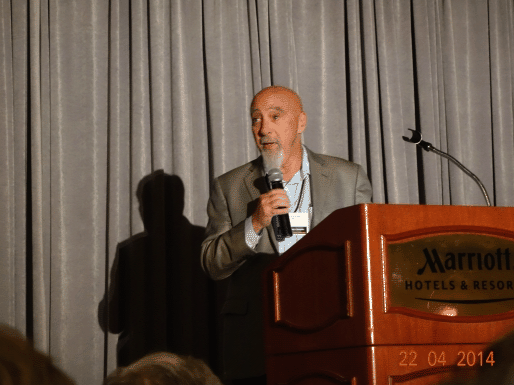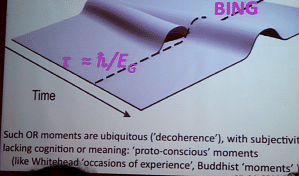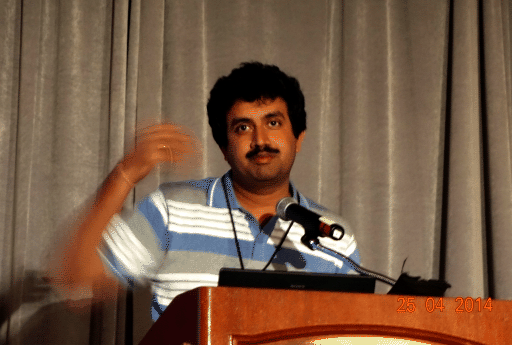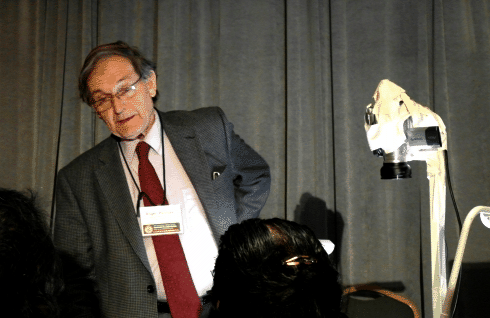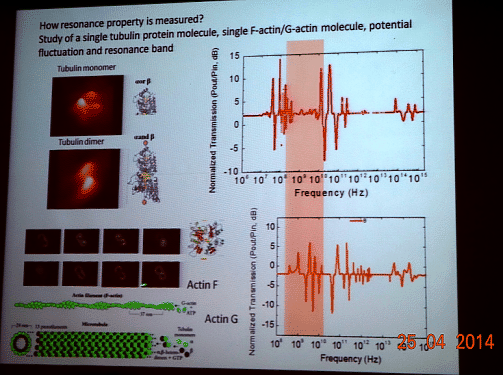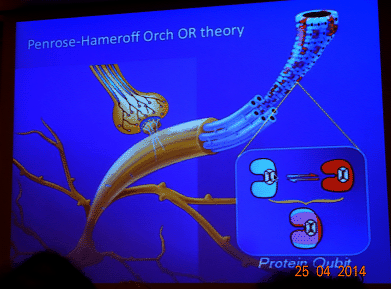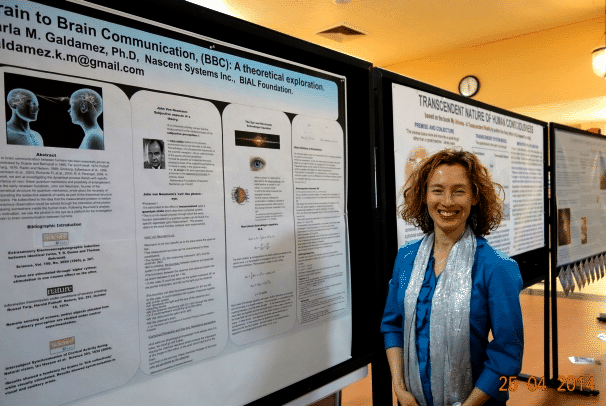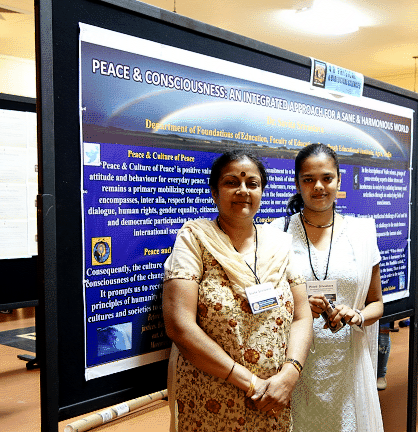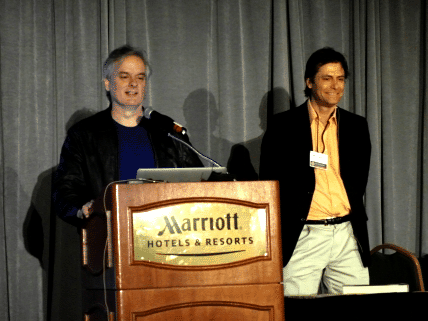Toward a Science of Consciousness – TSC 2014
The University of Arizona, Tucson USA, April 21-26
– Therner & Loeth –
The annual international conference “Toward a Science of Consciousness – TSC”, organized by the University of Arizona, celebrated its 20th anniversary in April 2014. The event was fully booked, with approximately 1000 participants from all over the world. The conference was led, as usual, by Stuart Hameroff (the University of Arizona) and David Chalmers (Australia National University, New York University), who also gave their own interesting presentations. Because we have prioritized our work together with Per Bruus-Jensen, (continuing to write on The Ontology of the Cosmic Worldview The X-Structure; The Basic Nature of Life and Existence – Ontology of Consciousness and Reality), we will very briefly present the TSC Conference as follows together with some general information and photos.
I. NCP X-AIONS´ participation and contribution.
II.”Can Current Science give us Access to Reality?” – A brief presentation of our view regarding this topical and fundamental question, originally posed by Deepak Chopra, Menas Kafatos and Niel Theise.
III. Presentations -Text rendering of abstracts (from the TSC program) of some of the presentations that have many points of contact and similarities to the Cosmic Worldview which Martinus and Per Bruus-Jensen convey. It is really very difficult to make such a limited selection among all the contributions especially as we were not able to participate in all the presentations (many of which ran simultaneously).
I. NCP X-AIONS attended with the following presentation:
The X-Structure; The Basic Nature of Life and Existence – Ontology of Consciousness and Reality
THE SCIENCE OF CONSCIOUSNESS TSC 2014, UNIVERSITY OF ARIZONA
Abstract — Images & Text
The X-Structure; the Basic Nature of Life and Existence – Ontology of Consciousness and Reality (Steen Loeth; Arnold Therner; N-B Therner; Per Bruus-Jensen, NCP X-AIONS New Cosmic Paradigm – Advanced Institute of Ontological Principles and New Science, Skoevde, Sweden)
According to the X-structure reality fundamentally – both objective and subjective – is immaterial emptiness and stillness. The X-structure constitutes the very basic nature of Reality, Life and Consciousness. This fundamental X-structure is in principle the same for everything including the infinite Cosmos – activating and transforming the emptiness and stillness into energy, force, movement, matter and life-experience/ consciousness.
The primordial domain of existence “X0” is an all-embracing unmanifested, virtual world of emptiness and stillness, containing infinite potential of creative possibilities and continuously activating an indivisible, integrated, triune operating principle with three functional aspects: X1 creator and experiencer (the subject/I, emptiness, stillness); X2 creative and experiential ability (energy); X3 the created and experienced (movement, the material illusion, the manifested universe, life-experience/consciousness).
X2 is expressed by seven extremely subtle qualitative “fundamental/basic energies” with specific characteristics. These basic energies build up everything from the most subtle (consciousness, thoughts, feelings, memories etc.) to the very densest (physical matter, black holes etc.). The primary fundamental energy (“the mother energy”) holds and operates via a number of so-called creative principles, termed morphogenetic effect constants; formative and structuring forces which sustain and organize life and reality. We can empirically observe the effects of these morphogenetic effect constants e.g. in the constants of nature, laws of nature with their extremely delicate precision. The X2-function and its effect constants “split up” the all-embracing totality (X0), i.e. the status of nonduality and nonlocality, the nature of infinity and eternity is divided and separated into life-units, individuals, as well as states and distances, comprising space and time, etc. The complementarity of wholeness/oneness – duality/separation, and also “the structure of entanglement” are formed and expressed through the morphogenetic effect constants (X2).
The result of the interaction between the subject (X1) and its creative/experiential ability (X2) is represented by the created (X3), namely the material illusion as objective reality on one side, and the experience of it as subjective reality on the other, “the subjective reality complex”. Everything created (X3) emerges as expressions of life (movements) and thus constitutes a contrast to the X0-nature of emptiness and stillness. Creation involves conversion of energy and manifests itself as movement – the five universal classes of motion: primordial motion (“from A to B”), space, time, transformation, matter. Motion is the most distinctive feature of life – movement is life in demonstration. Note that all motions of the Universe neutralize each other, confirming the all-embracing X0-nature of emptiness and stillness. X3 includes as mentioned the experience of expressions of life (movements) and thus the generation of consciousness, i.e. knowledge of something’s being, including itself. The phenomenon of consciousness/life-experience concerns the way in which X2/energy and its objective functions (= energy conversion X3/objectively), exist for X1 (= life-experience X3/subjectively). The X-structure is based on the intuitive knowledge illustrating the Cosmic Worldview conveyed by the Danish intuitive philosopher Martinus Thomsen – presented by Per Bruus-Jensen and “the X-Project” by NCP X-AIONS, Advanced Institute of Ontological Principles and New Science, researching the Ontology of the Cosmic Worldview and presenting New Science, www.newcosmicparadigm.org
The Cosmic Transformation Process “from X0 to X3”; – the X-Structure and its Activation and Transformation of Emptiness and Stillness (Initial Reality) into Energy, Force, Movement, Matter and Consciousness – i.e. the creation of Life-Experience/Consciousness, is the superior task of the Triune Operating Principle and thereby of Life itself.
II. Can Current Science give us Access to Reality?
– Can the Scientific Method as now practiced and based on naive realism give us access to the nature of Fundamental Reality – the “stuff” or “essence” of the universe?
Deepak Chopra, Menas Kafatos, Niel Theise present this topical and fundamental question, which they also illustrate from various aspects. We do appreciate their summarizing and illustrating text on the subject (link follows below) and here we find many striking similarities to the Cosmic World picture. We also consider that the X-structure can dramatically develop the subject and provide answers to many central issues. Regarding the title issue our answer is (with all respect and appreciation for science that has given and gives us so much): No, it is not possible…
Very briefly: We are “trapped” in our physical bodies and limited by the structure and functions of our sensory organs. Through our bodies and our senses we are converting the objective reality to subjective experience of the objective reality. It is a transformation process, which also means that we cannot experience reality as it is, purely objectively. This is really obvious; for example, our experience of reality would be completely different if we had compound eyes, the hearing organs of a bat and so on. … Our experience and knowledge about reality is limited by our organs of perception. Everything in the universe described by traditional science is a description of how we perceive it, limited by our human capacity and based on the specific conditions prevailing in our planetary system. Chopra, Kafatos and Theise also point this out, emphasizing that: “Empirical evidence” is a description of species specific (human) mode of observation in a specific planetary system.
To sum up: We transform objective reality into subjective experience; what we experience is thus a subjective, converted and limited version of the objective reality. (The X-structure describes how this transformation process works!)
We can only understand reality as it is via intuition and this understanding is independent of our ordinary perception and sensory organs. Chopra, Kafatos and Theise express: “Transcendence is our only option”.
The old notion that, through our perception and current scientific methods, we obtain an objective view of reality as it is, constitutes a major obstacle and a significant barrier to scientific development. We need to realize that all we get through traditional science only is a subjective view and understanding of reality, an image we ourselves have created through our sensory organs, also influenced by the conditions prevailing in the world around us with its specific structure and laws of nature etc.
Chopra, Kafatos and Theise also emphasize that the universe is conscious and write the following: “Consciousness is an activity of awareness from atoms to cells to organisms to galaxies” – “The Universe is Consciousness” – “Matter is a state of consciousness” – and in this context we want to say that EVERYTHING is a representation of consciousness at various levels.
Regarding “chance” or “randomness,” we/NCP X-AIONS have a different view; namely that everything is governed by and functions according to precise and specific fundamental laws and principles and that randomness and chance do not exist – but is a factor that we humans have “invented” and use to explain the many contexts and issues where we do not yet understand the workings of life and reality …
(Link to: “Can Current Science Give Us Access To Reality?” by Deepak Chopra, Menas Kafatos & Niel Theise)
III. Presentations …
Text rendering of abstracts (from the TSC program) of some of the presentations that have many points of contact and similarities to the Cosmic Worldview which Martinus and Per Bruus-Jensen convey. It is really very difficult to make such a limited selection among all the contributions especially as we were not able to participate in all the presentations (many of which ran simultaneously).
The Hard Problem of Consciousness: 342 Years On
David Chalmers (philosophy, “the hard problem”) opened the main conference by highlighting “the hard problem of consciousness”.
I will discuss the history of the hard problem of consciousness, the strategies that have been applied to solving or dissolving it over the last twenty years, and what I see as the currently most promising prospects for progress.
The ‘Combination Problem’ in Scientific and Eastern Spiritual Approaches to Consciousness
Deepak Chopra
Reality is generally viewed as material particles influenced by force fields, and consciousness as subjective first-person experience, but how the two relate remains unknown. For example John Searle says physical processes in the brain cause subjective conscious experience, but also that computation per se cannot give rise to consciousness. If not computation, then what? How does the brain solve the “hard problem”? Christof Koch, Giulio Tononi, Max Tegmark and others embrace panpsychism and pan-protopsychism, claiming that subjective experience is a property of the particles which comprise the world. In this approach, the consciousness of a pebble differs from that of a human by the degree of complex, “bottom-up” integration of its constituents (the “combination problem”). I come from a “top down” tradition, Vedanta, which posits consciousness as the ground state of the universe. In essence consciousness is a field with properties akin to those in quantum theory and general relativity, smaller in scale but vast and interconnected in the fine scale structure of the universe. When Krishna states in the Bhagavad-Gita, “I am the field and the knower of the field,” we are hearing a version of quantum complementarity, in which the opposites of objective and subjective states are reconciled by going to a deeper level (the so-called three-in-one state) in which observer, observed, and observation are fused. Unlike some versions of panpsychism, Vedanta doesn’t hold that consciousness is a property of matter but that materialism is a property of consciousness. Both the hard problem and the combination problem are thus radically revised. Consciousness does not have to be built up, derived from combinatorial states of simple “building blocks,” but “top-down” from a deeper level of “cosmic consciousness” which includes the potential for all experience. Penrose’s embrace of Platonic values in spacetime geometry gives primacy to non-material laws, functions, and relationships. In Vedanta, consciousness is perfectly capable of setting up the universe to be lawful and to evolve conscious observers who explore those laws. In physics, values of cosmological constants determine suitability for consciousness (the antidote to the anthropic principle). With consciousness imbued in it’s structure, it’s not surprising the universe is optimal for consciousness. And in genetics, Platonic values may influence DNA mutations and guide evolution. With specific regard to the combination problem, in Vedanta, organized, intelligent cosmic consciousness is primary, fundamental and universal. Rather than “bottom-up” combination, e.g. by integration, what must occur instead is “top-down” combination, e.g. by filtering, censoring or “localizing” for human consciousness. This also implies that enlightened states of awareness tap into deeper level ground state of cosmic consciousness.
Qualia and the Mathematics of Consciousness
Menas Kafatos (cosmology, astrophysics, quantum mechanics, quantum biology etc)
Ever since the development of quantum mechanics, a new world view has emerged. Today the assumption that external objects exist independently of acts of observation is being seriously challenged. The universe is truly participatory, as John Archibald Wheeler was fond of saying. The repercussions of this radical challenge to common-sense perception have been far-reaching, yet we face the current situation of proceeding with an observer-based science of consciousness which is not yet fully developed. What is plausible, and in fact has been proposed by physicists, psychologists and medical practitioners, is that the unpredictability of specific quantum outcomes, coupled to the observer’s ability to make observational choices, is tied to the concept of free will. This would be a starting point for the emerging science proposed here. I will argue that there is an alternate view to real objects existing independently of observation, and that is the view that consciousness itself is primary. More and more scientists are coming closer to this view. Quantum coherence in microtubules and quantum effects in biology are pointing to the undeniable role of quantum processes in living systems and the primacy of complementarity. Niels Bohr himself held that view. The primacy of consciousness and the need to develop a new paradigm was hinted by the brilliant quantum pioneer, Wolfgang Pauli “It is my personal opinion that in the science of the future reality will neither be ‘psychic’ nor ‘physical’ but somehow both and somehow neither.” And the founder of quantum physics, Max Planck himself, held the view “I regard consciousness as fundamental. I regard matter as derivative from consciousness. We cannot get behind consciousness. Everything that we talk about, everything that we regard as existing, postulates consciousness.” If consciousness is primary, then qualia play a primary role. I will outline the arguments of how the world of the subjective experience may be tied to the world of appearances of objective phenomena, both emerging from consciousness. A starting point is to explore possible mathematical formalisms that would get us as close as possible to understanding of the ways consciousness operates. I will briefly describe several of these formalisms and show how such fundamental mathematics emerges from principles which limit undivided consciousness. This view resonates with the work of Hameroff and Penrose on Platonic principles at the Planck level fabric of space-time.
Consciousness: Down The Rabbit Hole – Just How Deep in Physics do the Roots of Consciousness Go?
John Hagelin (physics, cosmology – efforts to link consciousness to the unified field etc)
We present further evidence, using cutting-edge developments in physics and neuroscience, that the core phenomenon of consciousness originates deep within the physical realm–in nonrelativistic quantum mechanics, relativistic quantum mechanics (quantum field theory), and perhaps ultimately quantum gravity (unified field theory). Other authors (Penrose, Hameroff) have already proposed Planck-scale mechanisms rooted in quantum gravity as the ultimate origin of consciousness. We bolster that hypothesis and associated calculations using todays mathematically self-consistent, fully calculable quantum gravity theories. We also illuminate how these core, quantum-scale phenomena of consciousness relate to brain-scale cognitive functioning:
First, we distinguish content-free consciousness (a.k.a. samadhi) from awareness of content. We identify in the EEG this content-free consciousness (the observer) as global-alpha1-coherence; the content of consciousness (the observed) as higher frequency harmonics of this alpha1; and the observer-observed relationship that is needed to support awareness-of-content as the stable, phase-locked relationship been the alpha1 and its higher-frequency harmonics. (Publication in press.) Second, we discuss the interesting relationship between the EEG and the much higher frequencies associated with the quantum origins of consciousness–e.g., megahertz frequencies characteristic of microtubule vibrations. A clearer bridge is needed between these high frequency dynamics and the human EEG. A natural bridge would arise if elements of the EEG were continuously scalable, i.e., frequency independent, as some recent evidence suggests. We present an explicit, novel quantum-field-theoretic mechanism for such scale invariant behavior–a mechanism that simultaneously sheds light on numerous other mind-body enigmas.
Quantum Vibrations In Microtubules – ‘Orch OR’ – 20 Years On
Stuart Hameroff (anesthesiology, Orch OR theory)
Prevalent views ascribing consciousness to complex computation among integrate-and-fire brain neurons fail to account for memory, binding, the ‘hard problem’, real-time conscious control and (arguably) EEG rhythms. On the contrary, the Penrose-Hameroff theory of ‘orchestrated objective reduction’ (‘Orch OR’), introduced in the mid 1990’s, suggests consciousness and cognition derive from deeper-order, finer scale quantum vibrations in microtubules during integration phases inside integrate-and-fire brain neurons (e.g. within dendrites/soma of pyramidal neurons). According to Orch OR, superpositioned states of microtubule ‘tubulin’ subunits entangle to perform quantum computations according to the Schrodinger equation during neuronal integration phases, these computations terminating by Penrose ‘objective reduction’ (‘OR’) at time t=h/E (h is the Planck-Dirac constant, and E is the gravitational self-energy of superpositioned tubulins). Penrose OR is a proposed solution to the quantum measurement problem tied to properties of fundamental spacetime geometry (related to quantum gravity), and introduces subjective experience with each OR moment.
When occurring in random environmental superpositions (i.e. ‘decoherence’), OR moments are accompanied merely by low intensity, non-cognitive ‘proto-conscious’ experience. However in brain microtubules, quantum superpositions may be isolated and ‘orchestrated’ (‘Orch’) by memory, synaptic inputs and resonances, allowing functional cognition accompanied by Orch OR moments of full, rich conscious experience and choice. Microtubule tubulin states chosen in each Orch OR event can trigger axonal firings to consciously control behavior and adjust synapses. Orch OR has enormous explanatory power, but has been viewed skeptically, as heat in presumably random biological environments has been assumed to cause ‘decoherence’ of quantum states. But functional quantum activity is observed in photosynthesis, olfaction, bird navigation and -.microtubules. Using nanotechnology, Bandyopadhyay’s group discovered quantum resonance (gigahertz, megahertz and kilohertz) in single microtubules, and microtubule bundles inside active neurons, with coherence as long as 10-4 secs (10 kilohertz). Microtubule quantum vibrations and Orch OR events e.g. at 10 megahertz (10-7 secs coherence) can resonate across scales, and interfere to generate slower ‘beat frequencies,’ seen as EEG rhythms. Thus Orch OR predicts that EEG derives from faster, finer scale quantum vibrations in microtubules inside neurons, e.g. apical dendrites and soma of cortical pyramidal neurons. As 10-7 secs microtubule coherence is sufficient for Orch OR, and 10-4 secs microtubule coherence has been verified, Orch OR is on firm ground experimentally regarding decoherence. Also, recent evidence indicates anesthetics act in microtubule quantum channels to selectively erase consciousness. In conclusion, after 20 years, Orch OR is the most rigorous and successfully tested theory of consciousness ever put forth. Noninvasive therapies aimed at brain microtubule vibrations (e.g. megahertz transcranial ultrasound ‘TUS’) offer potential benefit for a variety of mental and cognitive disorders. Reference: Hameroff S, Penrose R (2014) Consciousness in the universe: A review of the ‘Orch OR’ theory. Physics of Life Reviews 11(1)39-78 http://www.sciencedirect.com/science/article/pii/S1571064513001188
Opening “Pandora’s Box”: Direct Measurement of Microtubule Bundle Resonance in a Live Neuronal Axon Suggests Scale-invariant Brain Dynamics Extends Inside Neurons
Anirban Bandyopadhyay (quantum biology, neuroscience)
Electromagnetic resonance (e.g. megahertz and kilohertz) discovered in single, cell-free microtubules (Sahu et al, 2013a; 2013b) has been questioned in terms of occurrence and relevance in neurons and the brain. In this study we inserted, and recorded from atomically sharp (0.1 nanometer) electrode tips in cytoplasm in and around bundles of parallel microtubules in axons of hippocampal neurons in culture. We found that (1) when the axon ‘fires’, the propagating membrane depolarization wave (‘spike’) is accompanied by a unique, complex waveform in cytoplasm, near and along the microtubule bundle. (2) Analysis of the intraneuronal cytoplasmic wave shows frequency overlap with recordings from single microtubules, with a common megahertz resonance peak. (3) We also measured cytoplasmic resonance in multiple neurons in a network or cluster of neurons, and found resonance overlap in the kHz domain.
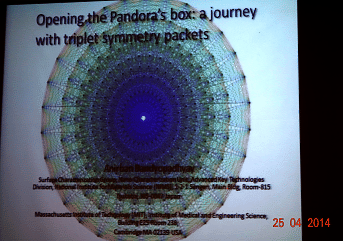 We suggest a spatiotemporal scalar (‘fractal-like’) hierarchy extends downward in size, and increasing in frequency, from brain to neuronal networks to neurons to microtubule bundles to microtubules, and to single ‘tubulin’ proteins (the subunit of microtubules). In such a proposed massively parallel, scale-invariant hierarchy, information at any level is distributed among all levels, and the entire system, and thus applicable to the mechanism of consciousness. References (1) Sahu et al (2013) Biosens Bioelectron 47:141:8. (2) Sahu et al (2013) Appl Phys Lett 102:123701.
We suggest a spatiotemporal scalar (‘fractal-like’) hierarchy extends downward in size, and increasing in frequency, from brain to neuronal networks to neurons to microtubule bundles to microtubules, and to single ‘tubulin’ proteins (the subunit of microtubules). In such a proposed massively parallel, scale-invariant hierarchy, information at any level is distributed among all levels, and the entire system, and thus applicable to the mechanism of consciousness. References (1) Sahu et al (2013) Biosens Bioelectron 47:141:8. (2) Sahu et al (2013) Appl Phys Lett 102:123701.
Consciousness and the Laws of Physics
Roger Penrose (Orch-OR theory, mathematical, physics, cosmology, philosophy of scienec etc)
Is consciousness of little relevance to the laws of physics, perhaps coming about merely as a side-effect of complicated computational activity, or is it intimately connected with those laws, being a manifestation of specific physical processes or even specific materials? Orch-OR proposes that whereas neuronal microtubules would be playing a key role in the production of animal consciousness on Earth, that role would be their ability to support large-scale quantum coherence to a level where spontaneous gravitationally induced objective state reduction (OR) takes place.
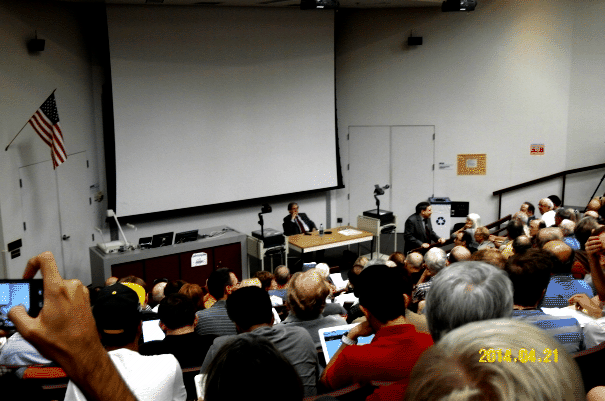 A strong theoretical argument, coming from a clash between accepted principles of physics (Einstein’s equivalence principle and the quantum superposition principle), gives good reason for believing that gravitational OR (or something like it) ought to be true. Physical experiments currently under development may well provide confirmation or refutation of this proposal within a decade. Orch-OR depends upon a positive conclusion, and also that each occurrence of gravitational OR is a non-computational process accompanied by an element of proto-consciousness. Consciousness itself, would involve vast numbers of such proto-conscious events acting in an appropriately orchestrated way. New developments suggest that “beat frequencies” are a likely consequence, possibly giving insights into the origin of EEG.
A strong theoretical argument, coming from a clash between accepted principles of physics (Einstein’s equivalence principle and the quantum superposition principle), gives good reason for believing that gravitational OR (or something like it) ought to be true. Physical experiments currently under development may well provide confirmation or refutation of this proposal within a decade. Orch-OR depends upon a positive conclusion, and also that each occurrence of gravitational OR is a non-computational process accompanied by an element of proto-consciousness. Consciousness itself, would involve vast numbers of such proto-conscious events acting in an appropriately orchestrated way. New developments suggest that “beat frequencies” are a likely consequence, possibly giving insights into the origin of EEG.
NCP X-AIONS also attended the following workshop, which featured new and groundbreaking research:
Microtubules and Quantum Biology
Roger Penrose, Stuart Hameroff, Jack Tuszynski, Travis Craddock, Anirban Banyopadhyay
Quantum vibrations in microtubules support the controversial Orch OR theory, and provide a basis for EEG
as ‘beat frequencies’ of intra-neuronal dynamics. Mainstream views assume consciousness emerges from complex synaptic computation among brain neurons, each acting as a fundamental information unit. However such views fail to 1) generate testable predictions, 2) provide supportive evidence, or 3) distinguish conscious from non-conscious processes. Moreover, single cell organisms perform cognitive activities without synaptic connections, utilizing cytoskeletal microtubules which regulate neuronal synapses, and organize neuronal activities.
Cylindrical polymers of the protein tubulin (the brain’s most prevalent protein), microtubules are proposed to process information, encode memory, and serve as quantum computers underlying consciousness in the Penrose-Hameroff model of ‘orchestrated objective reduction (‘Orch OR’).
The idea of quantum computing in the ‘warm, wet and noisy’ brain has been viewed skeptically, but evidence in recent years supports warm, biological quantum coherence in photosynthesis, DNA and microtubules. This workshop will review and update the relevant biology, biophysics and pharmacology of microtubules.
Brain To Brain Communication Is Investigated Through Theoretical Approaches To Non-linear Quantum Mechanical Formalism And Wave Function Collapse.
Karla Galdamez (quantum physics)
Brain to brain communication between humans has been essentially proven as demonstrated by Duane and Behrendt in 1965; Tar and Puthoff, 1974; Puthoff and Targ, 1976; Radin and Nelson, 1989; Grinberg- Zylberbaum et al., 1994; Wackermann et al., 2003; Richards TL et al., 2005; M. A. Persinger, 2008. In this work, we aim at investigating the dynamical process therein with specific importance on non- linear quantum mechanics and possibility of entanglement. Since the early nineteen hundreds, John von Neumann, founder of the mathematical structure for quantum mechanics, wrote about the necessity of incorporating the subjective aspects of reality as part of the theoretical structure in physics. He subscribed to the idea that the measurement problem in relation to conscious observation could be solved through the interaction of the photon collapsing somewhere inside the human brain. Following Neumann’s analysis as a motivation, we use the photon in the eye as a platform for the investigation of brain to brain communication between humans. (Key words: quantum mechanics, microtubules, non-linear quantum mechanics, wave function collapse, quantum measurement problem, John von Neumann, telepathic communication, synthetic telepathy).
Martinus describes the world, Cosmos (which we often call “the universe”), as an infinite multiverse; i.e. the universe consists of an infinite number of universes, “the infinite totality” with no beginning and no end … And in this context, we would also like to mention the Swedish physicist Max Tegmark (physics, cosmology, etc.) who also participated in the conference. Max Tegmark operates in the U.S. and is internationally very well known for, among other things, his innovative and groundbreaking theories. He states, for example, that: “physical reality is a mathematical structure”, (described in his new book, Our Mathematical Universe – My Quest for the Ultimate Reality, 2014) and emphasizes that the universe is a multiverse. Brian Rotman´s text (The Guardian, Friday 31 January 2014) about this book is very illustrative:
“He (Max Tegmark) writes at the cutting edge of cosmology and quantum theory in friendly and relaxed prose, full of entertaining anecdotes and down-to-earth analogies. His book seeks to induct the reader into a wildly speculative cosmic vision of infinite time and space and infinite parallel universes. Close to his heart is an extreme Pythagorean/Platonic thesis: physical reality is ultimately nothing other than a giant mathematical totality.”


